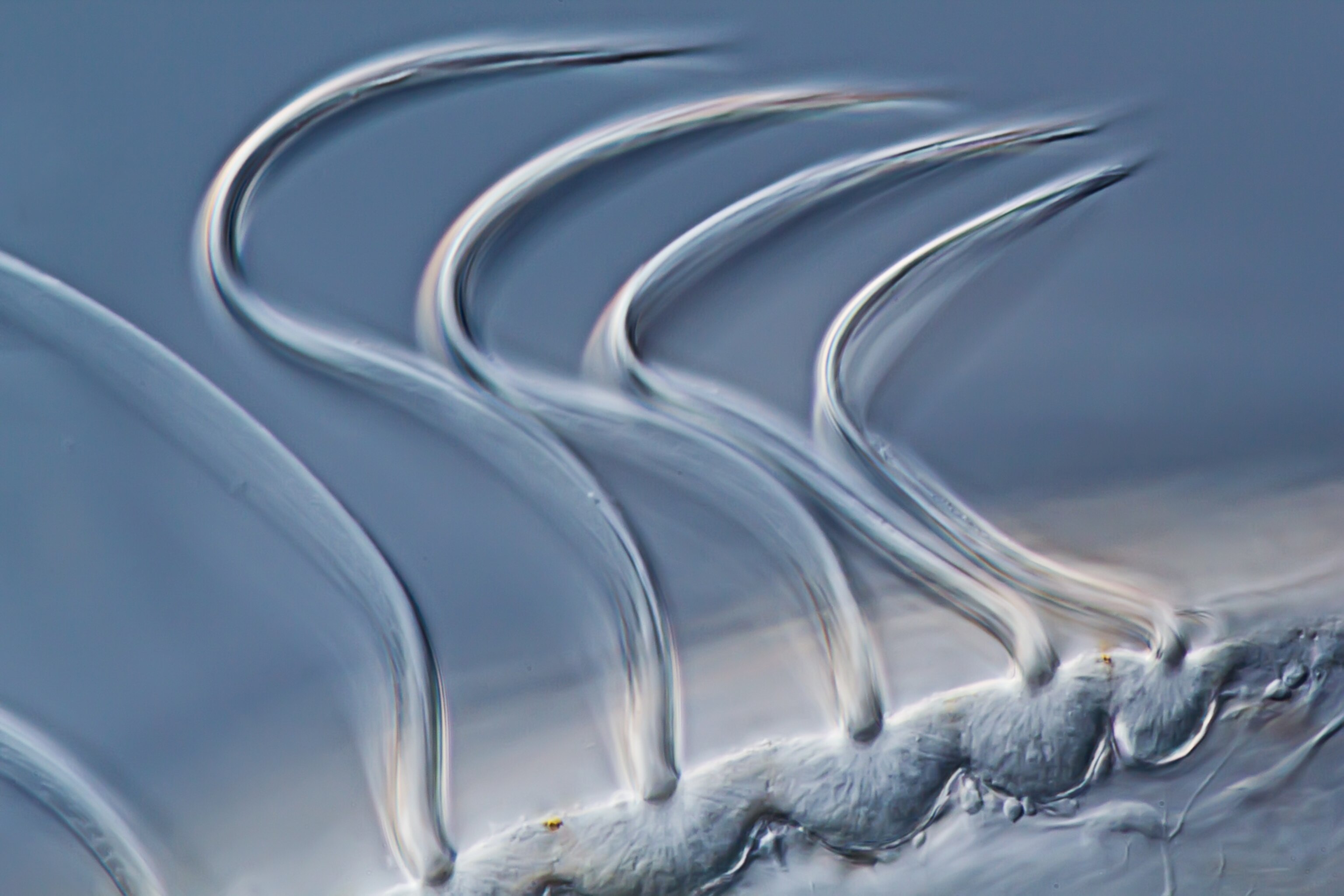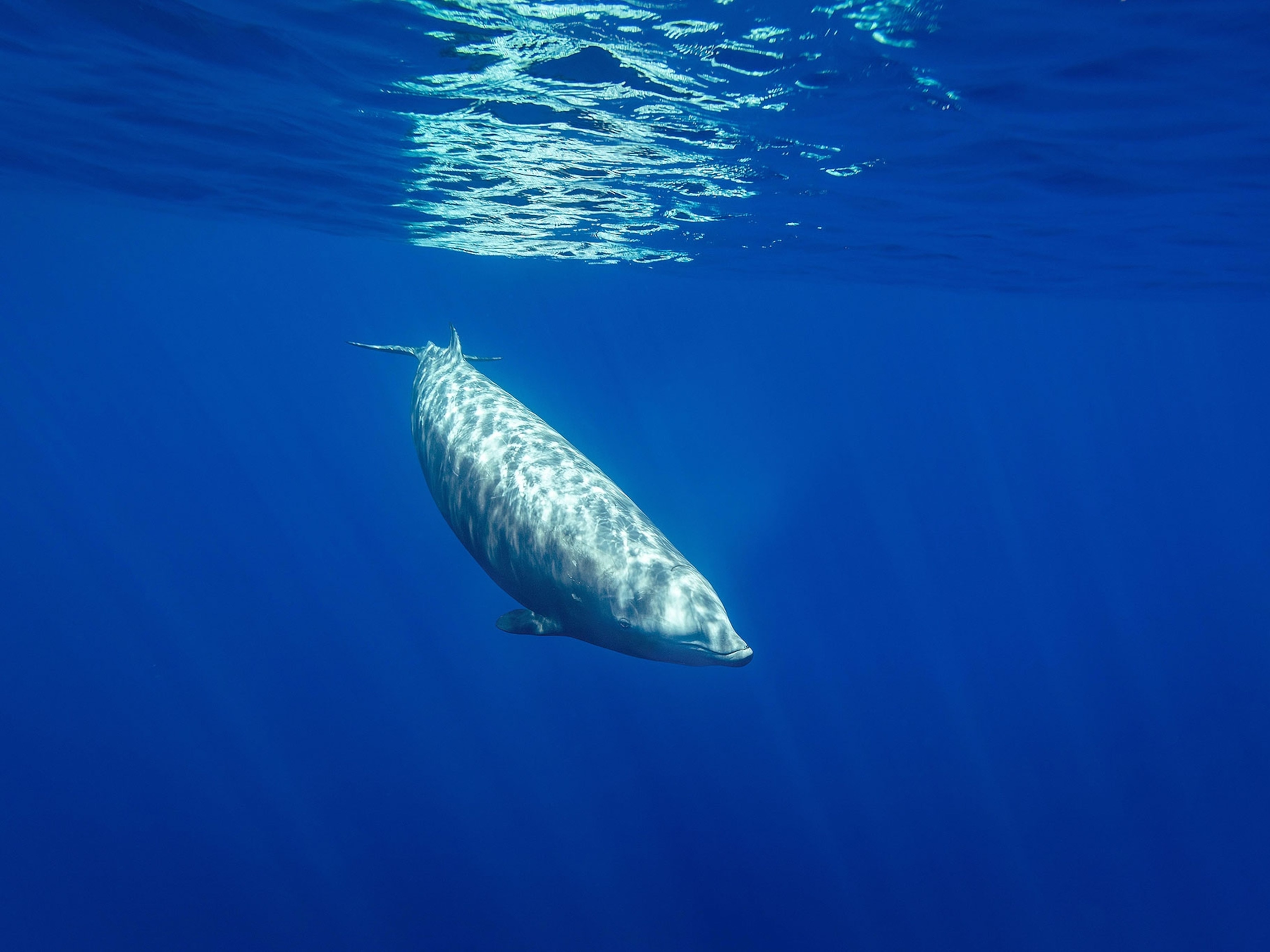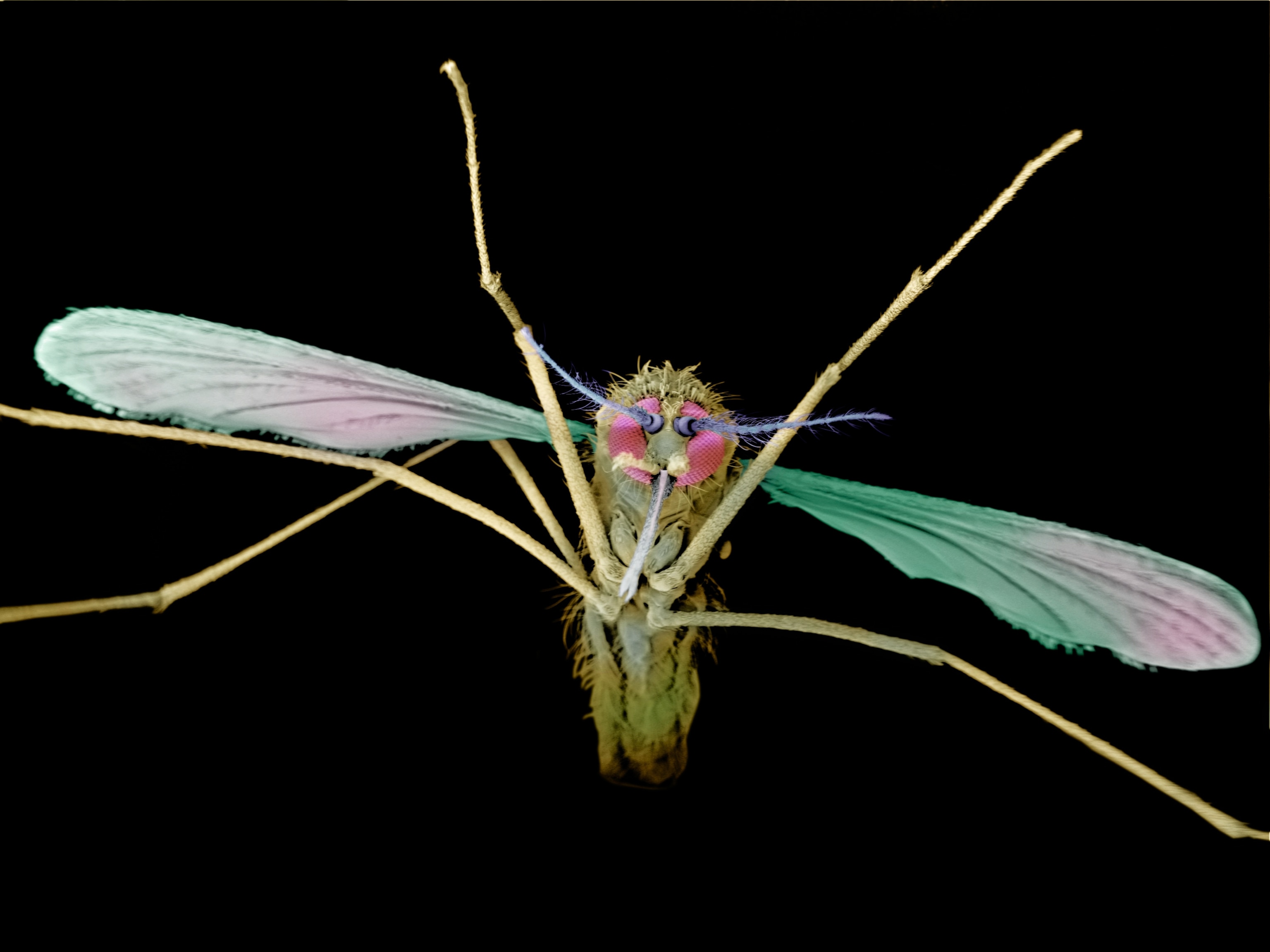What looks like a tangle of Christmas lights is actually the brain of a zebrafish embryo, winningly photographed for the 2012 Small World Microphotography Competition.
Winners of the international contest were announced Tuesday. This shot—taken by Jennifer Peters and Michael Taylor of St. Jude Children's Research Hospital and magnified 20 times—took first prize. It's believed to be the first image ever to show the formation of the blood-brain barrier in a live animal.
The barrier is a protective system of cells that filter the blood that flows to the brain. It allows nutrients and other necessities to pass but keeps out bacteria and other pollutants.
To create this shot, Peters and Taylor injected fluorescent proteins into a transparent zebrafish embryo. That let them see the brain's endothelial cells—which line the inner surface of blood and lymphatic vessels—and watch the development of a blood-brain barrier in real-time.
Their three-dimensional image was made with a confocal microscope, which colors blood vessels differently at different depths. (Confocal lenses capture light from a single plane of focus, rather than all available light.) Peters and Taylor stacked their colored images and compressed them into a single shot to show the complexity of the phenomenon they witnessed.
(See pictures of 2011's best micro-photos.)—Kate Andries















